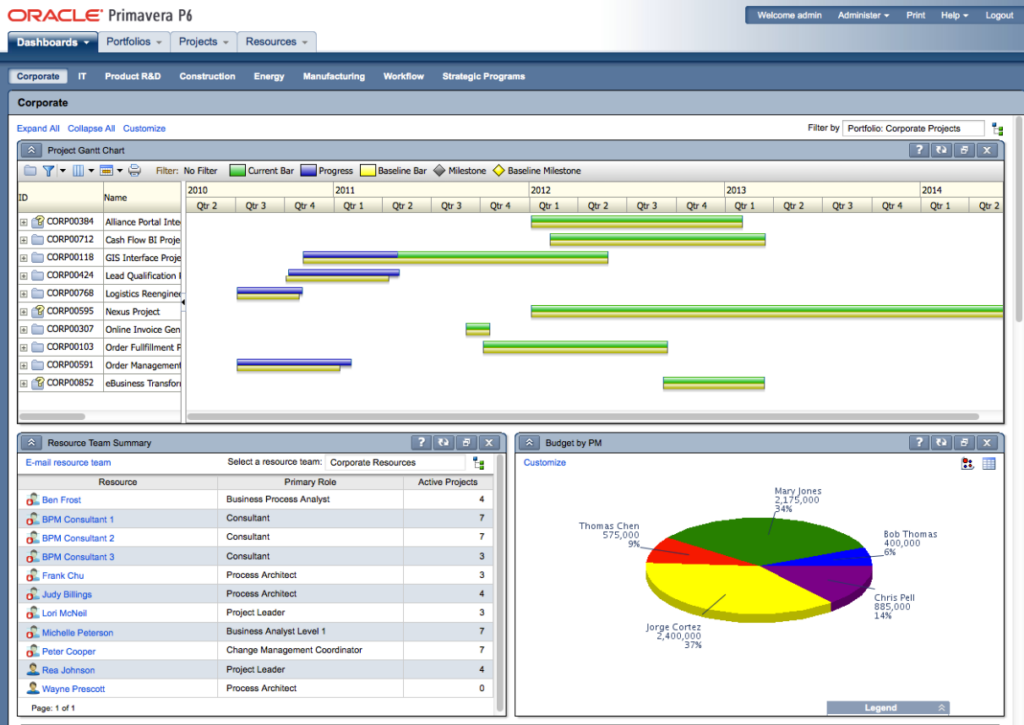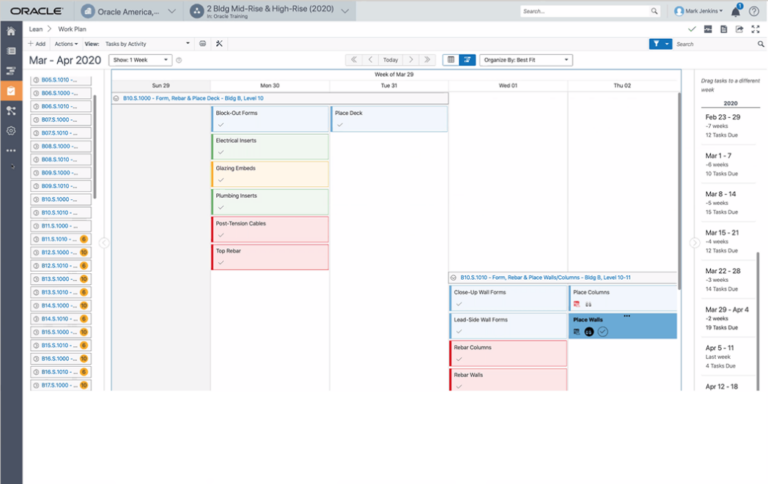Microsoft Project stands as a premier project management software solution designed by Microsoft. With its robust set of tools, it facilitates scheduling, task management, resource allocation, and progress tracking. Users can easily visualize project timelines, collaborate in real-time, and integrate seamlessly with other Microsoft Office products, ensuring a streamlined approach to project completion.


Oracle Primavera caters predominantly to large enterprises, offering a robust project management solution especially tailored for sectors like engineering, construction, and utilities. This software delivers advanced scheduling, resource allocation, and project portfolio management tools, empowering users to handle large-scale and complex projects with precision and efficiency.
P6 versus MSP Key Differences
Oracle Primavera and Microsoft Project are both leading project management software solutions, each with its own set of features and functionalities. Here are the key differences between the two, emphasizing the critical path:
Oracle Primavera and Microsoft Project are both leading project management software solutions, each with its own set of features and functionalities. Here are the key differences between the two, emphasizing the critical path:
1. Target Audience
- Oracle Primavera: Primarily targets large enterprises, especially those in industries such as engineering, construction, utilities, and public sector. Its robustness and scalability make it suitable for large-scale projects and portfolios.
- Microsoft Project: Serves a broader range of organizations, from small businesses to large enterprises. It’s versatile and caters to various industries.
2. Complexity and Learning Curve
- Oracle Primavera: Generally has a steeper learning curve, given its extensive feature set tailored for complex projects.
- Microsoft Project: Offers a more user-friendly interface and is often easier for beginners to grasp.
3. Integration and Compatibility
- Oracle Primavera: Provides better integration capabilities with other Oracle products, such as Oracle ERP systems.
- Microsoft Project: Integrates well with other Microsoft Office products and services like SharePoint.
4. Critical Path Method (CPM)
Oracle Primavera and Microsoft Project both offer critical path method (CPM) capabilities, but they differ in depth, flexibility, and visualization. Oracle Primavera delivers advanced CPM functionalities, catering to large-scale projects by managing multiple critical paths within one project and offering comprehensive “what-if” scenario analyses. Primavera provides diverse views and filtering options for critical path analysis and integrates closely with risk management tools to assess how potential risks could impact the project’s critical path.
- Oracle Primavera: Boasts advanced capabilities when it comes to the critical path method. It offers in-depth analysis, multiple critical paths for a single project, and detailed what-if scenario capabilities.
- Microsoft Project: Features a basic critical path function, allowing users to visualize and determine the critical path in their projects. However, its features might be less extensive compared to Primavera for very complex projects.
In contrast, Microsoft Project focuses on identifying and displaying a single critical path, making it straightforward and suitable for most general project scenarios. Its visualization is predominantly through the Gantt chart, differentiating critical tasks using color or highlighting. While Microsoft Project does offer some scenario analysis and risk assessment tools, its integration between risk and the critical path isn’t as extensive as Primavera’s. The choice of software largely depends on the project’s complexity and desired depth of analysis.
5. Cost
- Oracle Primavera: Tends to be more expensive, aligning with its features and targeting towards large-scale industries.
- Microsoft Project: Offers various pricing tiers, making it more accessible for smaller organizations.
6. Customization and Configuration
- Oracle Primavera: Offers a higher level of customization and configuration options to meet specific industry needs and standards.
- Microsoft Project: Provides standard customization options suitable for a variety of general project management needs.
7. Collaboration Features
- Oracle Primavera: Offers features like team collaboration, document management, and real-time updates, but might require additional integrations or modules.
- Microsoft Project: Benefits from its integration with Microsoft 365, allowing for seamless collaboration through tools like Teams and SharePoint.
In conclusion, while both tools offer critical path functionalities, Oracle Primavera provides a more advanced and in-depth approach, making it ideal for large-scale, complex projects. On the other hand, Microsoft Project serves as a versatile tool for a broader range of projects and organizations. The choice between the two should be based on the specific requirements, scale, and complexity of the projects in question.



